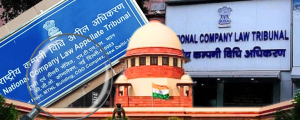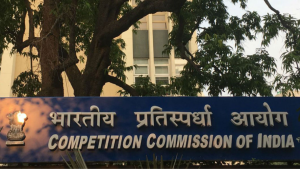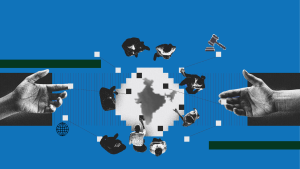
Menu
Menu

Menu
The Indian Judicial System by Numbers (Part II)
This is Part II of the blog on empirical data sources on the Indian judicial system. In Part I, we listed publicly available government data sources. In this post, we provide details of non-governmental data sources, as well as empirical studies on the Indian judicial system.
- DAKSH India: ‘DAKSH India’ is a civil society organisation that works towards state accountability, transparency and good governance. DAKSH collects case data from courts’ websites, classifies the data and conducts statistical analysis on the data. The entire data set can be accessed by anyone upon free registration. The portal also allows researchers to use the data to conduct their own analysis.
- DAKSH India – Access to Justice Survey 2015-16: DAKSH India conducted a survey to understand litigants’ perceptions on access to justice. Covering 9000 litigants across 300 locations, DAKSH in its report has analyzed the data on key socio-economic characteristics of litigants, their reasons for coming to court, and their experiences of the judicial system.
- Vidhi Centre for Legal Policy – Towards an Efficient and Effective Supreme Court: Vidhi is an independent think-tank working on various issues, including judicial reforms. In order to understand better the workload of the Supreme Court, Vidhi gathered raw data of around 49,000 cases from 2014. Based on this data, Vidhi produced a report titled ‘Towards an Efficient and Effective Supreme Court’.
- Vidhi Centre for Legal Policy –eCourts in India: The study is an assessment of the e-Courts project being implemented by the National Informatics Centre (NIC) for computerisation and digitalisation in Indian judiciary and its administration. The Report contains data on budget estimates, allocations and the number of courts covered under the project.
- Vidhi Centre for Legal Policy – Consultation Paper on the Supreme Court’s Burgeoning backlog: This paper provides data on the number of cases pending, pendency in regular matters, increase in number of cases pending for more than 5 years and increase in number of cases filed in the Supreme Court. The paper also discusses the issue of accessibility of the Supreme Court by litigants from the far off states in India and how it impedes their Right to Access to Justice. It graphically represents the correlation between distance from the Supreme Court and the percentage of matters appealed, and between per capita income and percentage of cases filed in appeal.
- How many Judges does India really need, Alok Prasanna Kumar: In this article the author discusses the number the judges that Indian judiciary needs to address delays in the system. The article contains data on judicial vacancies across all the states and the UTs.
- When Judgment Day Arrives Too Late, Alok Prasanna Kumar: The author in this article studies delays in judgment after arguments have been heard and the matter has been reserved for judgment writing. The articles contain data on judicial delays in judgment delivery after it has been reserved.
- Nick Robinson – A Quantitative Analysis of The Indian Supreme Court’s Workload: This article, analyses patterns of access to the Supreme Court of India.. The article provides data on the number of admission cases and regular matters pending in the Supreme Court from 1950 to 2010.Data on the number of constitutional benches formed in comparison to regular matters from 1950-54 to 2005-09, and percent of Supreme Court Admission Docket by Petition type from 1993 to 2011 is mentioned. It also lists the percentage of appeals to the Supreme Court originating from various High Courts. The author suggests that the Apex Court is accessed disproportionately by those who are closer to it geographically.
- Nick Robinson – A Court Adrift: In this article Robinson provides data indicating decline in the number of decisions by constitutional benches of the Supreme Court. In spite of having largely become an Appellate Court, the Supreme Court remains inaccessible to large segments of the population for various reasons, not least of which is geographical distance from the Supreme Court. Data presented in this article reveal that maximum matters appealed to the Supreme Court are from Delhi High Court, followed by Punjab and Haryana High Court. Compared to these courts, very few cases from the Southern and the North-Eastern High Courts are appealed to the Apex Court.
- Nick Robinson – Interpreting the Constitution: Indian Supreme Court Benches Since Independence: In this article Robinson studies all the constitutional benches constituted by the Supreme Court of India and their decisions, during 1950-54 to 2005-09 along various parameters.
- Rajeev Dhavan – ‘Supreme Court Under Strain: The Challenge of Arrears, 1978’: The author is a Senior Advocate in the Supreme Court and has written a series of articles and books on concerns with the functioning of the Indian judiciary. On the issue of delays and backlogs, Dhavan’s book provides detailed data and trends analysis of cases instituted, heard, pending and disposed by the Supreme Court. The focus of the book is on the Supreme Court during the period of 1950 to March, 1978. The chapters containing relevant information are available here, here and here.
- Rajeev Dhavan – Litigation Explosion in India, 1986:In this book the author explains the pattern of litigation in Indian Courts with focus on the Supreme Court and the High Courts. He discusses the problem of increasing backlog and solutions thereto. The book also lists data of courts in England for comparative analysis. The chapters containing the empirical data are available here, here and here.
- Varun Gauri – Public Interest Litigation in India Overreaching or Underachieving:In this paper the author finds that PILs constitute less that 1% of the Supreme Court’s caseload. The bulk of the Court’s caseload relates to its appellate jurisdiction. On the basis of data analysis the author contends that, “win rates for fundamental rights claims are significantly higher when the claimant is from an advantaged social group than when he or she is from a marginalized group, which constitutes a social reversal from the original objective of public interest litigation”.
- George H. Gadbois Jr. – ‘the Indian Judicial Behaviour’: This article contains data on social profile of judges and examines the impact of judges’ social location on their judicial behaviour and delivery of judgments.
- A Systems Analysis of the Indian Supreme Court, Herbert Hirsch and Gene L. Manson: The authors in this article engage in empirical investigation of how a system operates at society level and by using this as a conceptual tool analyze the functioning of the Supreme Court of India. It studies demander, empirical analysis of demand and the pattern of litigation, supply, input and output process involved.
- Litigation as a measure of well being – Sital Kalantry, Theodore Eisenberg and Nick Robinson: The paper contains data on state-wise GDP, per capita income and average rate of filings per capita to support the view that increased litigation is not necessarily because of an overly litigious society. Rather increase can also be explained by an increase in economic prosperity of the litigants. The paper finds a correlation between HDI indicators of a state and its litigation rate.
[ReviewDisclaimer]

Aparna Chandra

Rishabh Sharma
RECENT ARTICLES


Testing the Waters: Pre-Implementation Evaluation of the 2024 CCI Combination Regulations
Ritima Singh
December 18, 2024

Not Quite Rocket Science
Surya Prakash B.S
November 12, 2024

Administration of justice needs an Aspirational Gatishakti
Surya Prakash B.S
October 24, 2024

-
Rule of Law ProjectRule of Law Project
-
Access to Justice SurveyAccess to Justice Survey
-
BlogBlog
-
Contact UsContact Us
-
Statistics and ReportsStatistics and Reports
© 2021 DAKSH India. All rights reserved
Powered by Oy Media Solutions
Designed by GGWP Design